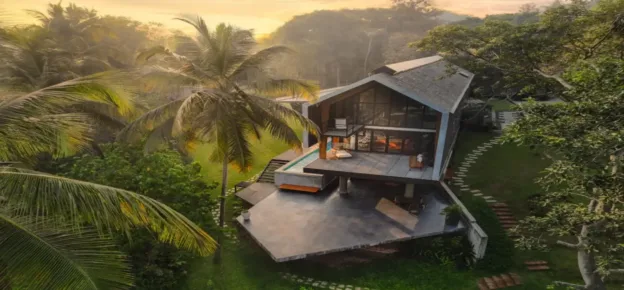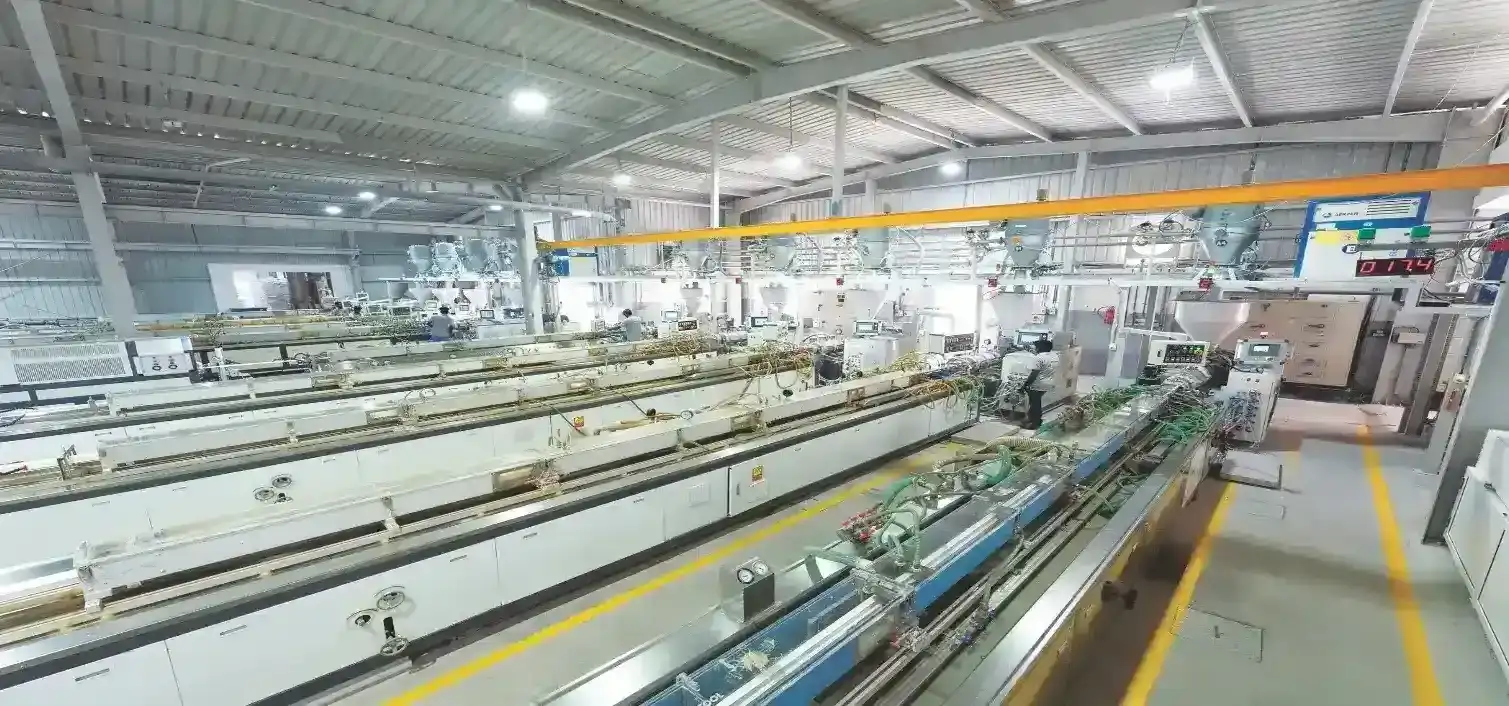In the evolving field of design, architectural façades have transformed their significance from just a face to a static envelope that acts as a dynamic interface between a built space and its environment. Adaptive and Dynamic Façade Design is an architectural strategy that focuses on building exteriors – façades that are responsive to functional, environmental, and aesthetic changes in real time. This design approach is an exemplary mixture of architecture, sustainability, and technology that improves the energy efficiency, occupant experience, and overall performance of the building.
What Is An Adaptive And Dynamic Façade?
An adaptive or dynamic façade is an intelligent building cover that can transform its properties physically in response to the external environment, like temperature, sunlight, and wind effects, and internal factors like thermal comfort, occupancy, and use of the space. It showcases technologies, responsive materials, and building automation to enhance the building’s performance and efficiency.
“Design is more than just a few tricks to the eye. It’s a few tricks to the brain” – Neville Brody.
As Neville Brody said, design indeed resonates with the aspects of varied progression, and with relevant knowledge and details, it is a cakewalk to understand the different elements to choose from. Let’s get into the know-how of these options to help you make an informed decision.
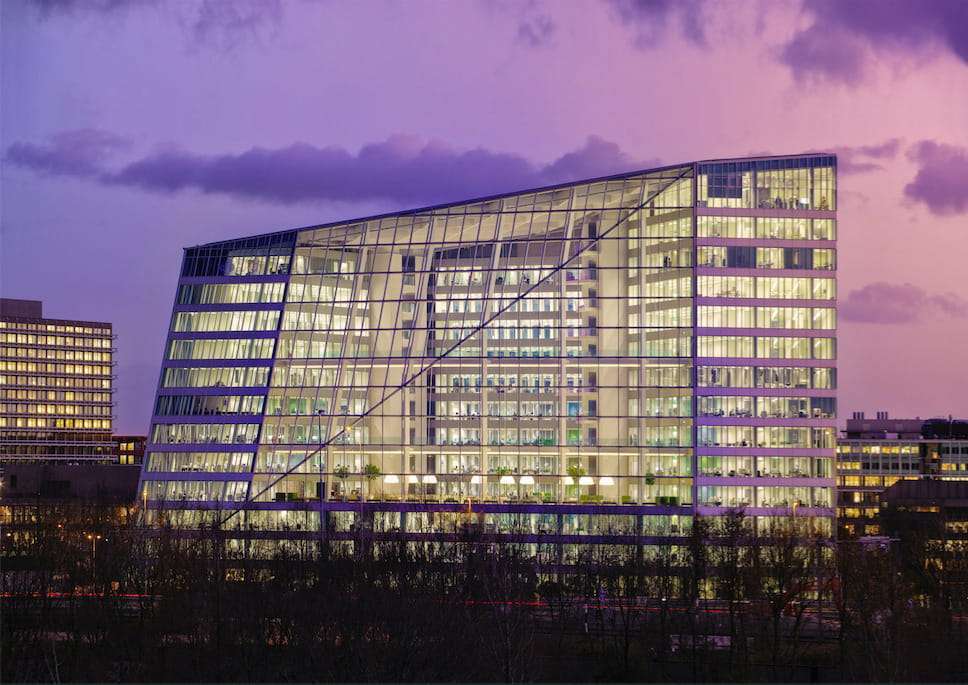
Key Components And Strategies
- Sensors and Automation: Adaptive and dynamic façades typically incorporate sensors that help monitor environmental variables, such as temperature, wind speed, light levels, and air quality. These sensors provide the data required by the Building Management System (BMS) to process the various façade responses accordingly.
- Smart Materials: Smart materials like actuators empower the mechanical movement of various façade design components like panels and louvres. Some offer extensive abilities and provide passive adaptability by changing their properties in response to environmental changes without any external input, like electrochromic glazing, shape-memory alloys, and thermochromic glass.
- Kinetic Systems: Kinetic façades are design elements that alter their form physically. These systems include retractable shading devices, rotating panels, and foldable screens that respond to environmental conditions, providing good control of light and ventilation.
- Dynamic Shading: Automated shading devices adjust in real time to reduce heat gain, cooling loads, and glare. They help maintain visual comfort and reduce the dependency on artificial lighting while maximizing daylighting.
- Ventilation Control: Some dynamic façades use operable windows and vents that adjust themselves according to the indoor temperature and air quality. These features integrate natural ventilation, reduce the HVAC load, and improve the air quality index.
- Energy Harvesting: Many dynamic façades incorporate solar panels or building-integrated photovoltaics (BIPV) that can adjust themselves to capture maximum solar power and contribute to the building’s energy production.
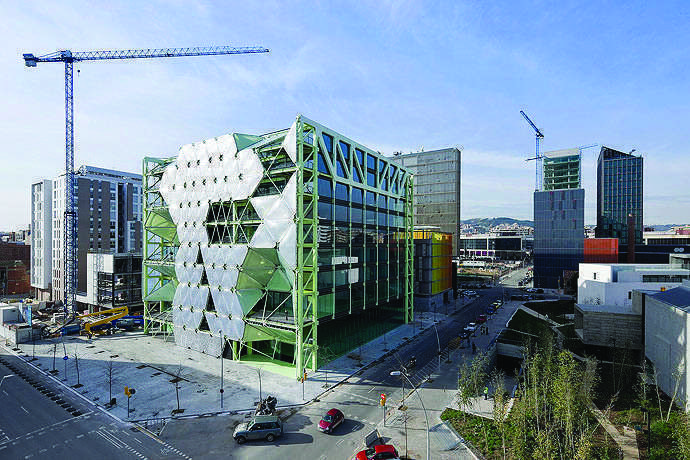
Benefits Of Adaptive Façades
- Energy Efficiency: By regulating heat loss and gain, dynamic façades significantly reduce the energy consumption required to run the heating, cooling, and lighting systems.
- Aesthetic Appeal: Adaptive façades are aesthetically engaging structures that change visually throughout the day and in different environmental conditions.
- Thermal And Visual Comfort: Responsive elements maintain a comfortable indoor environment, enhancing occupant experience.
- Sustainability: These façades provide improved energy performance and integration of renewable energy systems, which helps in reducing carbon footprints and enhancing sustainability.
Challenges
Despite their multiple advantages, adaptive façades come with certain challenges:
- Cost: The entire setup requires a high initial investment because of the use of advanced technologies and materials.
- Complexity: Adaptive façades demand high expertise in design and engineering to integrate successfully with building systems.
- Maintenance: Automated sensors and mechanical components need regular upkeep to ensure functionality and longevity.
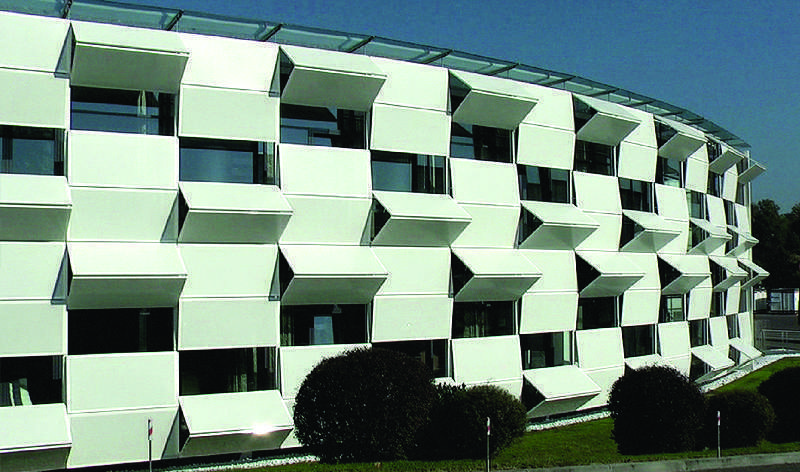
Notable Examples
- Al Bahar Towers, Abu Dhabi: Designed by Aedas Architects in collaboration with Arup, the twin towers in Abu Dhabi feature a responsive façade composed of over 1,000 individual shading elements. Inspired by traditional Islamic mashrabiyas, these umbrella-like modules open and close automatically in response to the sun’s movement. The system reduces solar gain by approximately 50%, lowering cooling demands while also offering a striking kinetic visual.
- Media-TIC Building, Barcelona: This high-tech office building, designed by Enric Ruiz-Geli and Cloud 9, employs inflatable ETFE (ethylene tetrafluoroethylene) cushions in its façade. These cushions adjust their opacity by inflating or deflating with air to regulate the amount of sunlight entering the building. The building responds in real-time to weather conditions, optimizing energy usage and daylight distribution throughout the workspace.
- The EDGE, Amsterdam: Known as one of the smartest and most sustainable office buildings in the world, The EDGE was designed by PLP Architecture. Its façade integrates smart blinds, automated lighting systems, and operable windows. Sensors throughout the building monitor light, occupancy, and temperature, feeding data to a central control system. The façade’s adaptability helps the building achieve outstanding energy performance, earning it a BREEAM rating of “Outstanding.”
- Institut Du Monde Arabe, Paris: Designed by Jean Nouvel, this landmark cultural centre incorporates 240 light-sensitive mechanical diaphragms into its south façade. Inspired by traditional Arabic mashrabiyas, the apertures open and close automatically to control light levels and solar gain. This integration of cultural aesthetics with modern technology was pioneering for its time and remains a celebrated example of kinetic architecture.
- One Ocean Thematic Pavilion, Expo 2012, Yeosu, South Korea: Created by SOMA Architects, this pavilion features a biomimetic façade made from shape-memory alloys. The façade’s metal fins curl in response to temperature changes, mimicking natural systems like flower petals. This passive mechanical movement eliminates the need for electrical actuators, showcasing the potential of smart materials In sustainable design.
- Kiefer Technic Showroom, Austria: The showroom’s dynamic façade consists of motorised aluminium panels that adjust individually in response to sun position and interior light requirements. Controlled by a central computer system, the façade offers flexibility in managing thermal comfort and privacy while also serving as a marketing tool for the company’s technical capabilities.
- Fondation Louis Vuitton, Paris: Frank Gehry’s innovative design for this contemporary art museum includes 12 glass ‘sails’ supported by a wooden and steel structure. While not adaptive in the traditional sense, the multilayered glass system moderates heat gain and light exposure. The curved glass elements reflect the surrounding environment, enhancing daylight within the galleries.

Conclusion
Adaptive and Dynamic façades are the most futuristic approach to smart and sustainable architecture. As rapid climate change and urbanisation increase, these techniques provide the path to responsive and efficient user-centric architectural solutions. These innovative façades act more efficiently for the environmentally conscious and technologically integrated approach. These intelligent systems mark a transformative shift in architectural design thinking, aligning aesthetics with function, human comfort with environmental responsibility, and technology with sustainability. By experimenting with the complexities of design, integration, and maintenance, architects and engineers can unlock the full potential of Adaptive and Dynamic façades.








